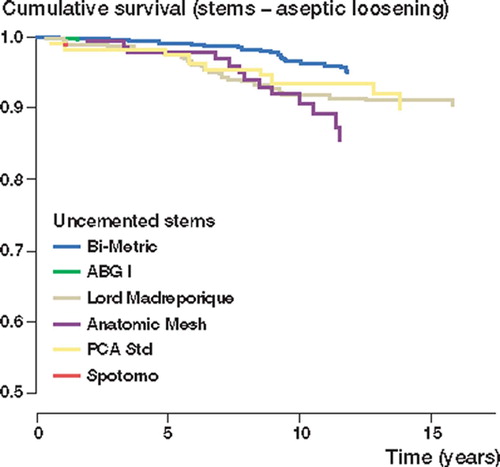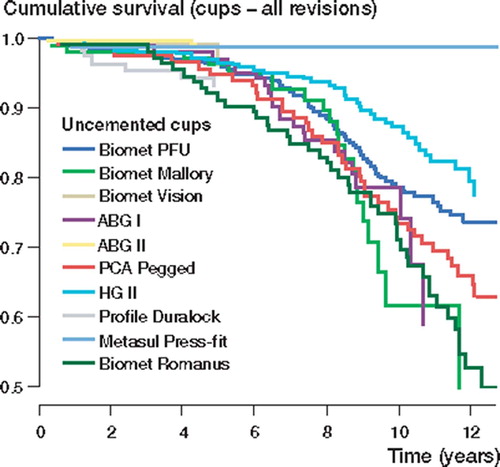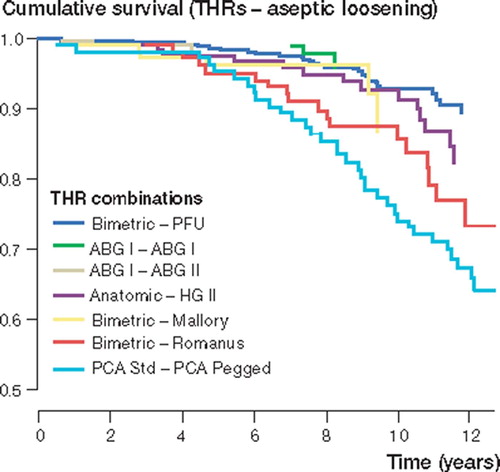Figures & data
Table 1. Design, surface and material of the femoral and acetabular components in the study
Table 2. Reasons for revision of components in the study. Values are no. of revisions (revision burden %)
Table 3. Survival and adjusted risk ratio for revision of stem brands. Endpoint was defined as revision due to aseptic loosening of the stem or stem revision for any reason. 7−, 10−, and 15–year survival rates obtained from the Kaplan–Meier analysis
Figure 1. Cox-adjusted survival curves of 3,127 stems in patients under 55 years of age, with brand of stem as the strata factor. Endpoint was defined as stem revision due to aseptic loosening. Adjustment has been made for age and gender. The curve of the Profile Porous stem is not shown, as it had a 100% survival rate at 10 years.

Table 4a. Survival and adjusted risk ratio for revision of cup brands. Endpoint was defined as revision due to aseptic loosening of the cup. 5–, 10– and 13–year survival rates obtained from the Kaplan–Meier analysis
Table 4b. Survival and adjusted risk ratio for revision of cup brands. Endpoint was defined as cup revision for any reason. 5−, 10− and 13–year survival rates were obtained from the Kaplan-Meier analysis
Figure 2. Cox-adjusted survival curves calculated for 2,801 cups, with brand of cup as the strata factor. Endpoint was defined as cup revision due to aseptic loosening. Adjustment has been made for age and gender. The curve of the Biomet Vision cup is not shown, as it had a 100% survival rate at 5 years.

Figure 3. Cox-adjusted survival curves calculated for 2,801 cups, with brand of cup as the strata factor. Endpoint was defined as any cup revision. Adjustment has been made for age and gender. The curves of the ABG II and the Biomet Vision cups are not shown, as they had a 100% survival rate.

Table 5. Survival of THR combinations and adjusted risk ratio for revision. Endpoint was defined as revision due to aseptic loosening of the stem and/or the cup or any revision. 5–, 10– and 13–year survival rates were obtained from the Kaplan–Meier analysis
Figure 4. Cox-adjusted survival curves calculated for 2,061 THRs, with implant combination as the strata factor. Endpoint was defined as revision due to aseptic loosening of the stem and/or the cup. Adjustment has been made for age and gender. The curve of the Bi-Metric – Vision is not shown, as it had a 100% survival rate at 5 years.

